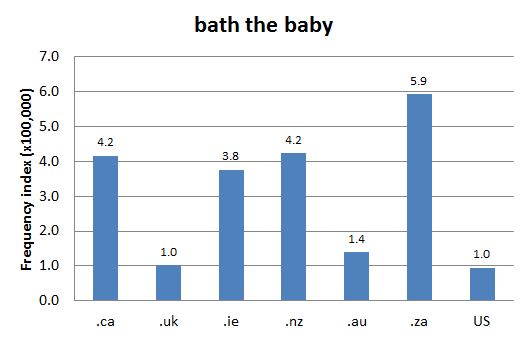DCHP-2
bath DCHP-2 (May 2016)
v.
to wash oneself or another, usually in a bath.
Type: 5. Frequency — The verb to bath functions as both a transitive (see the 1925 and 1945 quotations) and intransitive verb (see the 1920 and 1950 quotations). Variation between bath and bathe has a long history, with the form bath going back to the 15th century (see OED-3, s.v. "bath" (v)). In a secondary instance, a semantic differentiation has been created, as can be seen in OED-3's assessment that the verb "to bath" has a "more distinct reference" to washing in a bathtub (see OED-3, s.v. "bath" (v)), versus other bodies of water (e.g. pool, ocean, sink). Yet this distinction is not generally observed and bath can be used instead of bathe (see, e.g. the 1983 quotation). Chart 1 shows that the phrase "bath the baby", for instance, is more prominent in the Commonwealth countries, but not as common in the UK, where bathe would be used, or the US, which makes the term a Canadianism in the UK and US contexts.
See also COD-2, s.v. "bath" (v), which is marked "Cdn & Brit.".
